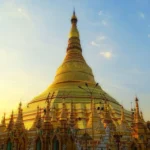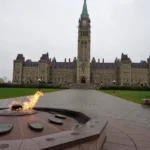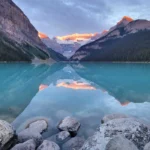
Nestled in the heart of Mexico’s Yucatán Peninsula lies one of the most remarkable archaeological sites of the ancient Maya civilization: Chichen Itza. This UNESCO World Heritage Site, known for its stunning architecture and rich history, has captivated the imaginations of travelers, historians, and archaeologists alike. From its iconic El Castillo pyramid to the intricate carvings of the Temple of the Warriors, Chichen Itza is a treasure trove of cultural significance and architectural ingenuity. In this blog, we will explore 25 fascinating facts about Chichen Itza that highlight its historical importance, cultural legacy, and the mysteries that continue to intrigue visitors from around the globe. Whether you’re planning a visit or simply looking to expand your knowledge, these facts will deepen your appreciation for this ancient wonder.
Location: Chichen Itza is situated in the Yucatan Peninsula of Mexico, specifically in the municipality of Tinum, within the state of Yucatan. The site is approximately 120 kilometers (75 miles) east of Merida and 200 kilometers (124 miles) west of Cancun. Its strategic location made it a vital hub for trade and cultural exchange among the various Mesoamerican civilizations. The proximity to cenotes, natural sinkholes filled with freshwater, provided essential water resources for the inhabitants.
UNESCO World Heritage Site: Chichen Itza was designated a UNESCO World Heritage Site in 1988 due to its cultural significance and well-preserved architectural features. The designation recognizes the site as a masterpiece of human creative genius and an outstanding example of the blending of different cultural influences, particularly those of the Maya and Toltec civilizations. This status helps to promote conservation efforts and increases awareness of the importance of preserving such historical sites for future generations.
Mayan Civilization: Chichen Itza was a prominent city of the Maya civilization, flourishing from the 7th to the 10th centuries AD. It served as a political, economic, and religious center, showcasing the sophistication of Mayan society. The city was a melting pot of various cultures, with influences from the central Mexican Toltecs evident in its architecture and art. The decline of the city around the 12th century is thought to be linked to various factors, including shifts in trade routes, drought, and social upheaval.
El Castillo: The most iconic structure at Chichen Itza is El Castillo, also known as the Temple of Kukulcan. This step pyramid stands at 24 meters (79 feet) tall and is composed of nine platforms, each representing a level of the Mayan underworld. The pyramid is dedicated to Kukulcan, the feathered serpent deity, and is an architectural marvel that reflects the Mayans’ advanced knowledge of mathematics and astronomy. The precise alignment of the pyramid with the cardinal directions and the equinox phenomenon demonstrates the importance of celestial events in Mayan culture.
Height: El Castillo’s height of 24 meters (79 feet) makes it one of the most impressive structures in Mesoamerica. Each of the four sides of the pyramid has 91 steps, which, when combined with the top platform, totals 365 steps, mirroring the days of the solar calendar. This design illustrates the Mayans’ intricate understanding of timekeeping and their reliance on astronomy for agricultural and ceremonial purposes. The pyramid’s grandeur not only served as a religious center but also as a symbol of the power and sophistication of the Maya civilization.
Equinox Phenomenon: One of the most fascinating aspects of El Castillo is the equinox phenomenon that occurs during the spring and autumn equinoxes. At these times, the sun casts shadows on the northwest corner of the pyramid, creating the illusion of a serpent slithering down the steps. This visual effect is a testament to the Mayans’ astronomical knowledge and their ability to incorporate celestial events into their architectural designs. The phenomenon draws thousands of visitors each year, who gather to witness this remarkable display of light and shadow.
Ball Court: Chichen Itza features one of the largest ball courts in Mesoamerica, measuring 168 meters (550 feet) long. The ball court, known as the Great Ball Court, was used for the Mesoamerican ballgame, a ritualistic sport that held significant cultural and religious importance. The court’s design includes sloping walls and stone rings through which players aimed to pass a rubber ball. The game was often associated with themes of life, death, and the underworld, and the outcomes could determine the fate of the players, sometimes even leading to human sacrifices.
Sacred Cenote: The Sacred Cenote is a natural sinkhole located near Chichen Itza, measuring approximately 60 meters (197 feet) in diameter and 25 meters (82 feet) deep. This cenote was considered sacred by the Maya and was used for ceremonial purposes, including sacrificial offerings. Archaeological excavations have revealed numerous artifacts, including pottery, jewelry, and human remains, indicating the cenote’s role in religious rituals. The cenote also served as a vital water source for the inhabitants of Chichen Itza, highlighting the importance of these natural features in Mayan society.
Population: At its peak during the 10th century, Chichen Itza is estimated to have had a population of around 35,000 people. This population included a diverse mix of social classes, from elite rulers and priests to common laborers and artisans. The city’s size and complexity reflect the advanced organizational skills of the Maya, allowing for trade and administration over a large area. The population density and urban planning of Chichen Itza indicate that it was not only a political and religious center but also a thriving community that supported various economic activities, including agriculture, trade, and craftsmanship. The presence of various structures, such as temples, residential areas, and marketplaces, suggests a well-organized society capable of sustaining a large population.
Architectural Style: Chichen Itza showcases a remarkable blend of architectural styles, primarily influenced by the Puuc and Chenes styles of the Maya, as well as Toltec elements. The Puuc style is characterized by its decorative stonework, intricate mosaics, and the use of smooth limestone in construction. In contrast, the Chenes style features more elaborate facades and the integration of sculptural elements into the architecture. The influence of the Toltecs is evident in the design of the Temple of the Warriors and other structures, which display elements such as serpent motifs and warrior imagery. This architectural diversity reflects the cultural exchange and interactions between different civilizations in Mesoamerica, making Chichen Itza a unique site that embodies the rich history of the region.
Observatory: The Caracol, an ancient observatory located within Chichen Itza, is a circular structure that was likely used by the Maya for astronomical observations. It features a unique design with a domed roof and slits in the walls that align with celestial events. The Caracol is believed to have been used to track the movements of celestial bodies, including the sun, moon, and planets, which were crucial for the agricultural calendar and religious ceremonies. This structure underscores the advanced understanding of astronomy possessed by the Maya and their ability to integrate this knowledge into their daily lives and cultural practices.
Tzolk’in Calendar: The architectural design of El Castillo reflects the Mayans’ sophisticated understanding of their calendar systems. The pyramid has 91 steps on each of its four sides, totaling 364 steps, plus one step at the top, bringing the total to 365 steps, which corresponds to the solar calendar. This design illustrates the importance of timekeeping in Mayan society, influencing agricultural cycles, religious rituals, and social organization. The Tzolk’in calendar, a 260-day ritual calendar, and the Haab’ solar calendar were both integral to the Maya, and the alignment of El Castillo with these calendars highlights the city’s role as a center for astronomical and calendrical knowledge.
Chichen Itza’s Name: The name “Chichen Itza” translates to “At the mouth of the well of the Itza,” reflecting the significance of the cenotes in the area, particularly the Sacred Cenote. The term “Itza” refers to a group of Maya people who are believed to have been the founders of the city. The name emphasizes the relationship between the inhabitants and their environment, particularly the reliance on freshwater sources for survival and ritual practices. The cenotes were not only vital for drinking water but also held spiritual significance, serving as sites for offerings and ceremonies dedicated to the rain god Chaac.
Cultural Significance: Chichen Itza served as a major cultural, political, and economic center in the Maya civilization. It was a melting pot of various cultural influences, attracting people from different regions for trade, religious ceremonies, and political gatherings. The city was also home to numerous temples, plazas, and ceremonial sites, reflecting its importance as a religious hub. The centralization of power and resources in Chichen Itza allowed it to flourish as a city-state, influencing surrounding regions and contributing to the exchange of ideas, art, and technology among Mesoamerican cultures.
Rediscovery: Chichen Itza was rediscovered in the 19th century by archaeologists and explorers, who were drawn to its impressive ruins and rich history. The site had been largely abandoned and overgrown by vegetation, but its significance quickly became apparent as excavations revealed the complexity of its architecture and the wealth of artifacts. The rediscovery sparked interest in Mayan civilization and led to increased archaeological research in the region. Efforts to restore and preserve the site began in the 1920s, making it accessible to the public and ensuring its protection for future generations.
Restoration: Major restoration work at Chichen Itza began in the 1920s, led by archaeologists and the Mexican government. The focus of these efforts was to stabilize and preserve the structures, many of which were in a state of disrepair due to natural erosion and human activity. Restoration projects have included the careful reconstruction of walls, steps, and decorative elements, as well as the removal of vegetation that threatened the integrity of the buildings. These efforts have been crucial in maintaining the site’s historical significance and allowing millions of visitors to experience the grandeur of Chichen Itza while ensuring its protection for future generations.
Temple of the Warriors: The Temple of the Warriors is a prominent structure at Chichen Itza, featuring a large group of columns and a temple at the top. This temple is adorned with intricate carvings and sculptures that depict warriors and other figures, highlighting its role as a center for religious and military activities. The temple is surrounded by 1,000 columns, which once supported a roofed area for gatherings and ceremonies. The architecture of the Temple of the Warriors reflects the influence of Toltec culture, particularly in its warrior imagery, and serves as a testament to the military prowess and social hierarchy of the Maya civilization.
Columns: The Temple of the Warriors at Chichen Itza is renowned for its impressive architectural feature of 1,000 columns that surround it. These columns are intricately carved and served both a structural and ceremonial purpose, supporting the roof of the temple and providing a space for rituals and gatherings. The design reflects the advanced engineering skills of the Maya civilization, showcasing their ability to create grand public spaces that could accommodate large numbers of people for various ceremonies.
Chac Mool: One of the most iconic artifacts at Chichen Itza is the statue of Chac Mool, which depicts a reclining figure with a distinctive posture, holding a bowl on its stomach. This statue is believed to represent a deity associated with rain and fertility, showcasing the religious significance of the site. The Chac Mool figures are often found in ceremonial contexts and are thought to have been used in rituals, possibly involving offerings to the gods, further emphasizing the spiritual and cultural importance of the site to the Maya civilization.
Cultural Festivals: Chichen Itza is not only an archaeological site but also a vibrant cultural hub that hosts various festivals throughout the year. These festivals often celebrate traditional Maya customs, music, dance, and rituals, drawing both locals and tourists. The events highlight the living culture of the Maya people and their ongoing connection to their historical roots, providing visitors with a unique opportunity to experience the rich heritage of the region firsthand.
Tourism: As one of the most visited archaeological sites in Mexico, Chichen Itza attracts over 2 million visitors annually. This influx of tourists underscores the site’s global significance and its status as a UNESCO World Heritage Site. The popularity of Chichen Itza is a testament to its architectural grandeur, historical importance, and the allure of the Maya civilization, making it a must-visit destination for those interested in history, archaeology, and culture.
Mayan Calendar: Chichen Itza is a remarkable representation of the Maya’s advanced understanding of astronomy and their calendar system. The layout of the site, including the famous El Castillo pyramid, is aligned with celestial events, such as the equinoxes. The Maya developed a complex calendar system that included the Tzolk’in (a 260-day calendar) and the Haab’ (a 365-day calendar), demonstrating their sophisticated knowledge of timekeeping and their deep connection to the cosmos.
Cacao: The Maya civilization was known to use cacao as a form of currency, and Chichen Itza served as a key trade center for this valuable commodity. Cacao was highly prized, not only for its use in beverages but also as a medium of exchange in trade. The presence of cacao in Chichen Itza highlights the economic sophistication of the Maya and their extensive trade networks, which facilitated the exchange of goods and cultural practices across Mesoamerica.
Influence: The architectural and urban planning of Chichen Itza had a lasting influence on later Maya cities. Its layout, characterized by ceremonial plazas, pyramids, and temples, served as a model for subsequent urban centers in the region. The innovations seen in Chichen Itza, including the integration of various architectural styles and the use of advanced construction techniques, helped shape the development of Maya architecture and urbanism in the centuries that followed.
End of Occupation: The decline of Chichen Itza began around the 12th century, a period marked by significant changes in the region. Various factors are believed to have contributed to this decline, including prolonged drought, which may have affected agricultural productivity, and potential warfare or social upheaval. As the population diminished, the once-thriving city gradually fell into disuse, leading to its eventual abandonment and the rise of other regional centers in the Maya lowlands.
Frequently Asked Questions About Chichen Itza
1. What is Chichen Itza?
- Answer: Chichen Itza is a major Mesoamerican archaeological site located in the northern part of the Yucatán Peninsula, Mexico. It was a significant ceremonial center for the Maya civilization.
- Key Points:
- Built and inhabited by the Maya people.
- Flourished between the 8th and 13th centuries AD.
- Showcases a blend of Puuc and Toltec architectural styles.
- Designated a UNESCO World Heritage Site in 1988.
- One of the New Seven Wonders of the World.
2. What are the most famous structures at Chichen Itza?
- Answer:
- El Castillo (Pyramid of Kukulkan): The most iconic structure, a massive step pyramid with a feathered serpent motif that appears to “descend” the stairs during the spring and autumn equinoxes.
- Temple of Warriors: A large temple with a colonnaded facade and intricate carvings.
- Great Ball Court: One of the largest and most well-preserved ball courts in Mesoamerica.
- Temple of the Jaguar: A small temple with jaguar motifs.
- Observatory (El Caracol): A circular structure believed to have been used for astronomical observations.
- Cenote Sagrado (Sacred Cenote): A natural sinkhole used for ritual sacrifices.
3. When is the best time to visit Chichen Itza?
- Answer:
- Shoulder Seasons (Spring & Fall): Generally considered the best time to visit. Fewer crowds and pleasant weather.
- Avoid Peak Season (Summer): Very hot and humid with high tourist volumes.
- Consider the Equinoxes (March & September): Witness the “descent” of Kukulkan on the pyramid.
4. How to get to Chichen Itza?
- Answer:
- From Cancun: The most common starting point.
- Bus: ADO offers frequent and comfortable bus service.
- Car: Rental cars are readily available, but driving can be challenging.
- Organized Tours: Many tour operators offer day trips from Cancun.
- From Merida: Further away, but also accessible by bus or car.
- From Cancun: The most common starting point.
5. What are the entrance fees and hours of operation?
- Answer:
- Entrance Fees: Vary and may change. Check the official website for the most up-to-date information.
- Hours of Operation: Typically open daily from 8:00 AM to 5:00 PM.
6. What should I wear and bring?
- Answer:
- Wear: Comfortable shoes, light and breathable clothing, a hat or cap, and sunscreen.
- Bring: Water, snacks, insect repellent, camera, and a small backpack.
7. Can I climb El Castillo?
- Answer: No. Climbing El Castillo is currently prohibited to protect the ancient structure.
8. What are some tips for visiting Chichen Itza?
- Answer:
- Go early: Arrive as soon as the site opens to beat the crowds and the heat.
- Hire a guide: A knowledgeable guide can enhance your understanding of the site.
- Stay hydrated: Bring plenty of water and stay hydrated throughout the day.
- Respect the site: Do not climb on structures, touch carvings, or litter.
- Consider a light jacket: Evenings can get cool, especially during the winter months.
9. What else is there to see and do near Chichen Itza?
- Answer:
- Cenote Ik Kil: A beautiful cenote with crystal-clear water for swimming.
- Valladolid: A charming colonial town with colorful buildings and delicious local cuisine.
- Coba: Another important Mayan archaeological site with a challenging climb to the Nohoch Mul pyramid.
10. What is the best way to book a tour to Chichen Itza?
- Answer:
- Online: Many reputable tour operators offer online booking options.
- Travel Agencies: Local travel agencies in Cancun or Playa del Carmen can also arrange tours.
- Compare prices and read reviews before making a decision.
11. Where is Chichen Itza located?
- Chichen Itza is located in the Yucatán Peninsula of Mexico, specifically in the state of Yucatán.









